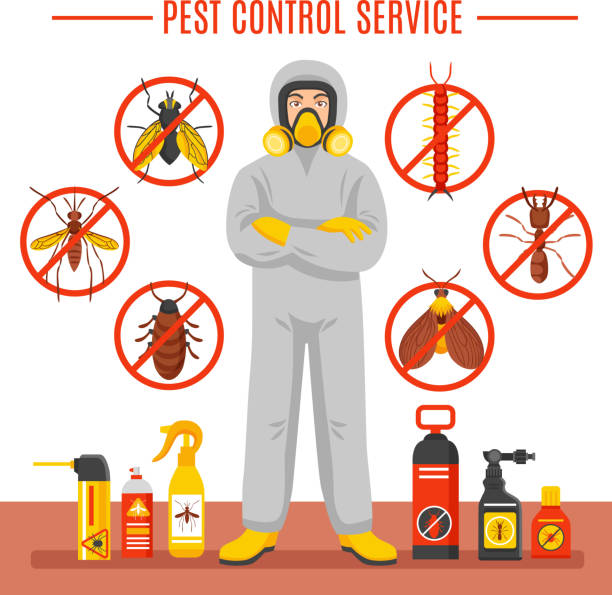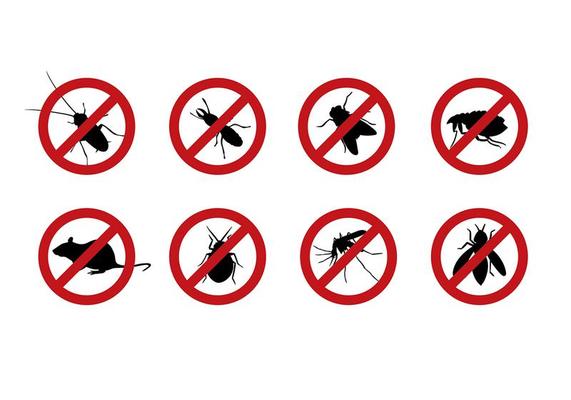Checking Out Invasion and Treatment Methods in the Globe of Insect Control
The landscape of parasite control includes a myriad of obstacles, especially as infestations of common family bugs continue to progress. By incorporating preventative actions with sophisticated administration methods, such as Integrated Parasite Administration (IPM), homeowners can better secure their atmospheres.

Typical Home Vermin
When it pertains to managing our home, understanding typical household pests is essential. These insects not only interrupt our convenience but can also pose health and wellness threats and damages property. The most prevalent house insects include ants, cockroaches, rodents, termites, and bed bugs.
Ants, typically seen foraging in cooking areas, can infect food and develop large colonies. Cockroaches, recognized for their strength, can cause allergic reactions and spread microorganisms. Rodents, consisting of computer mice and rats, can cause architectural damage and lug diseases like hantavirus and salmonella. Termites, commonly referred to as "silent destroyers," can endanger the stability of wooden structures, resulting in expensive repairs. Bed bugs, although not condition carriers, can cause considerable pain with their bites and lead to mental distress.
Acknowledging the signs of these bugs, such as droppings, nests, or attack marks, is vital for early intervention (Pest Control Lockhart). Correct cleanliness methods, sealing entry factors, and keeping a clutter-free environment are efficient preventative procedures. By identifying these typical household bugs and recognizing their habits, home owners can take proactive actions to minimize problems, guaranteeing a healthier living environment
Comprehending Bug Infestations
Bug invasions can rise swiftly, transforming a minor aggravation into a significant problem if not dealt with quickly. Typical elements contributing to infestations include bad sanitation, architectural vulnerabilities, and seasonal changes that drive parasites inside your home.
Determining the kind of parasite is essential, as different types display different behaviors and reproductive prices. For circumstances, rodents may develop nests in surprise areas while insects like cockroaches grow in moist settings. Early discovery commonly rests on identifying signs such as droppings, nibble marks, or uncommon noises, which can suggest a problem prior to it comes to be severe.
Warm, damp environments can promote the quick development of pest populations, while adjustments in landscaping or building can unintentionally produce conducive environments. An informed approach to understanding these dynamics lays the foundation for efficient parasite administration techniques in the future.
Treatment Approaches and Methods
Efficient therapy approaches and techniques are important for alleviating parasite invasions and restoring a risk-free atmosphere. A diverse strategy is often best, incorporating chemical, organic, and mechanical techniques tailored to the specific pest and the intensity of the invasion.
Chemical treatments consist of the usage of insecticides and herbicides, which can efficiently eliminate bugs. Proper application and adherence to security standards are vital to lessen dangers to people and non-target microorganisms. Integrated Parasite Monitoring (IPM) urges the cautious usage of chemicals as a last resource, relying instead on monitoring and threshold levels to establish intervention requirements.
Biological control approaches entail presenting natural predators or bloodsuckers to reduce parasite populations. This strategy is progressively popular, specifically in agricultural setups, as it promotes ecological sustainability.
Mechanical approaches, such as catches and obstacles, provide immediate relief from parasites without introducing chemicals. Options go to the website consist of sticky traps for insects or physical barriers for rats.
Inevitably, the option of treatment technique should take into consideration the specific insect, the atmosphere, and prospective influence on human wellness and ecosystems. A well balanced mix of these strategies can properly handle invasions while promoting long-term parasite control remedies.
Preventative Steps for Homes
Proactively dealing with parasite issues before they escalate is vital for maintaining a healthy home setting (Pest Control Lockhart). Implementing effective safety nets can significantly minimize the probability of invasions, eventually guarding both your property and health

Correct landscaping also plays an essential function in avoidance. Keeping shrubs and trees cut away from your home decreases the opportunities of bugs finding their way inside your home. Make certain that drainage systems are working efficiently to prevent standing water, which can attract in insects and various other insects.
Finally, routine examinations are a good idea. Consistently looking for indications of pest task allows for early intervention. By adopting these precautionary steps, home owners can develop a setting that is much less welcoming to pests, consequently enhancing their overall top quality of life and reducing the need for comprehensive pest control interventions.
Commercial Pest Control Approaches
A comprehensive method to business pest control is important for organizations intending to preserve a secure and sanitary environment. Effective techniques include a combination of routine assessments, worker training, and the implementation of Integrated Pest Management (IPM) practices.
Normal inspections allow early detection of insect activity, permitting prompt intervention. Companies ought More Info to develop a regular schedule for these assessments, concentrating on risky areas such as kitchens, storage space spaces, and waste disposal websites. Employee training is equally critical; team ought to be educated on the indications of parasite problems and the importance of reporting them promptly.
Applying IPM practices aids minimize pest concerns sustainably. This includes environment modification, such as securing entry factors and minimizing mess, in addition to utilizing all-natural deterrents before considering article chemical therapies.

Furthermore, teaming up with a certified bug control service provider ensures accessibility to expert understanding and advanced treatment choices. This collaboration can result in personalized bug control plans tailored to the particular needs of the business, minimizing risks and enhancing general effectiveness. Ultimately, a proactive and educated approach promotes a pest-free setting, securing both public health and wellness and organization online reputation.
Verdict
In verdict, efficient bug control demands a detailed understanding of usual household insects and their behaviors, coupled with targeted treatment approaches. Implementing precautionary actions along with therapy strategies such as Integrated Bug Management and organic control boosts the capability to alleviate invasions.